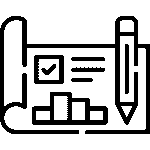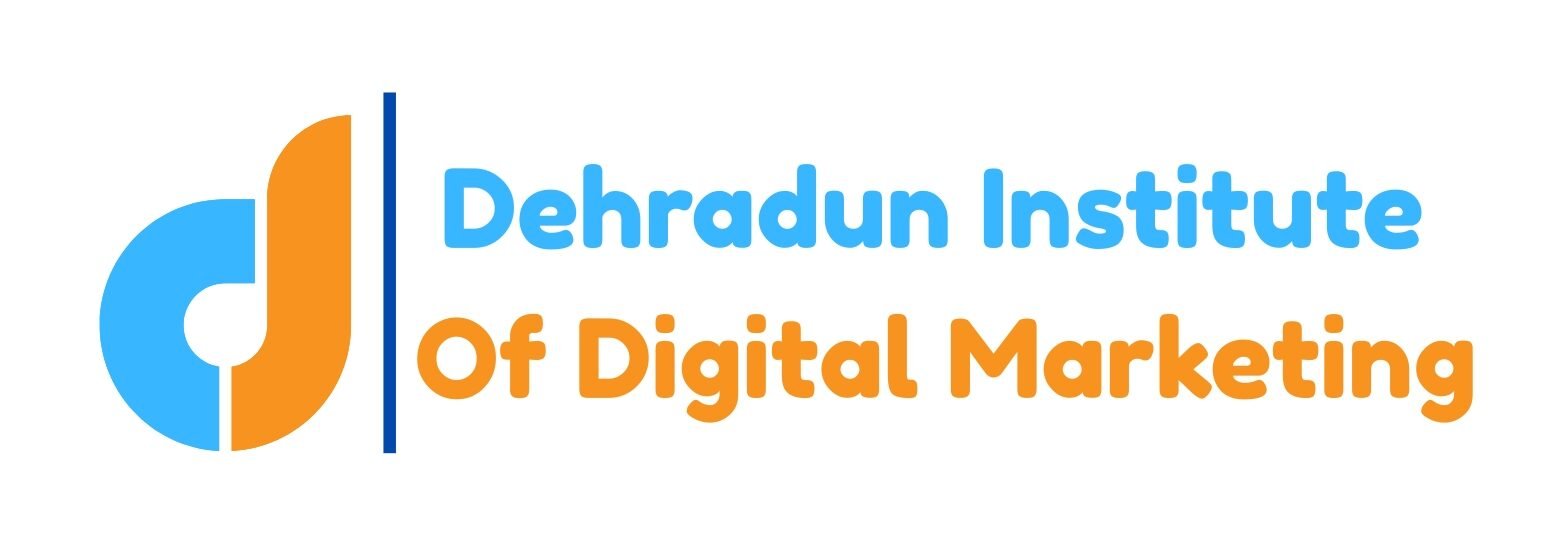Online Reputation Management course

We Provides The Best Online Reputation Management Services in Dehradun
Our online reputation management services are tailored for your needs and provide the best solution for all types of businesses. Our team of experts will help you get a handle on your online presence and provide you with guidance to achieve lasting results.
We’ve been in this field for years, providing the online reputation management services. Our reputation management services assist you to build your business on the foundation of a strong and consolidated business reputation.
Best Online Reputation Management Company Near Me
Local Reputation | International Reputation | Branding
Engage your customers in conversation to raise brand awareness.

Brand - Related mentions

Review Monitoring

Staying ahead of the competition

Social Media Optimization

Why You Should Choose Our ORM Services?
DIDM ORM services include everything you will ever need to rank higher, get more traffic and become an authority figure in your industry. We have a dedicated team of professional ORM experts who have a proven track record of success. For the past 2 years, we have been providing our services to many cities and many big states in India. Our ORM services make sure that your reputation is maintained on all the online platform.
We always do our best to provide you with the most effective services that will give you fast and quality results. Your satisfaction is our priority, so we’ll keep working with you until you’re completely satisfied with what we did for you.

What is Online Reputation Management?
Online Reputation Management (ORM) mixes traditional marketing, public relations, and search engine marketing. It entails manipulating search engine results to shield your company’s brand reputation from unfavourable online exposure. Take into account the fact that most internet searchers only look at the first two pages of search engine results. High rankings for positive publicity are therefore the end goal, which will push negative publicity down search engine listings and out of the public eye. The following are some advantages of putting an ORM approach into practise in your company:
Best ORM Services in Dehradun
Due to the phenomenal expansion of digital marketing, establishing a respectable online presence for organisations is now simple (Website, social media handles). Nevertheless, let’s not overlook the rival businesses that damage the organization’s brand with unfavourable comments and reviews.
Businesses that invested in ORM saw a 25% increase in revenue.
Therefore, it is crucial for businesses to work to safeguard their brand’s reputation, which may be achieved by putting a suitable ORM platform in place. Businesses may create and maintain a positive online brand image with the help of ORM in digital marketing. Any negative criticism of your reputation is simply deflected and diminished in importance. If any of your private data is exposed online, ORM assists in removing that information from accessible databases.

Why You Need An ORM Expert Company
For Your Business?
Multiply your website visitors to acquire new customers. Increase your Google ranking with our best
ORM services in Dehradun, Uttarakhand.

Website Optimization
We improve your website performance in order to increase visitor engagement and conversions.

Visitor Growth
We calculate visitor growth need to know the number of visitors who visited your site during a specific time period.

Google Analytics
We connect Google Analytics that helps you to track traffic and make our ORM efforts more effective.

Keyword Planning
We focus on relevant Keywords, Search term and descriptions for search engines and customers to make your website visible on relevant keyword.

Link Building
We Build a strong link profiles that gives you credibility, helps your site rank higher, and boosts your site's performance in key areas like indexing and backlinks.

Reputation Management
We build a long-term strategies that includes a comprehensive and ongoing approach to building, sustain and manage your brand’s reputation among your target audience.
DIDM- ORM Company in Dehradun
DIDM is a digital marketing agency that provides small businesses and startups with ORM services. We believe that every business deserves visibility on the web, and we’re here to make sure your business gets it! In just 2 years, we have completed more than 100+ client projects. Our ORM goals are:
- Improve customer satisfaction by speaking with irate consumers personally.
- Restore ties with customers by offering service recovery to those who are dissatisfied.
- Engage your customers in conversation to raise brand awareness.
- By speaking with clients directly, you can lower marketing costs.
- Keeping an eye on your online reputation
- Promote your business
- Drive purchases

Module 1: Introduction to Online Reputation Management
1. What is Online Reputation Management (ORM)?
ORM is the practice of monitoring, influencing, and managing how individuals or brands are perceived on the internet.
It includes:
Monitoring mentions and reviews
Responding to feedback
Promoting positive content
Minimizing negative content visibility
2. Importance of ORM
Business Impact: 93% of consumers read reviews before buying.
Trust Building: Strong reputation builds consumer trust and loyalty.
Search Visibility: Reputation influences how you’re seen in Google results.
Crisis Control: ORM helps control damage during negative publicity.
3. Key Areas Covered by ORM
| Area | Description |
|---|---|
| Social Media | Customer feedback, public complaints, community management |
| Search Engines | Google results, blogs, news articles |
| Review Platforms | Google Reviews, Yelp, Trustpilot, etc. |
| Email/Forums | Private feedback, Quora, Reddit discussions |
4. ORM vs Traditional PR
| ORM | PR |
|---|---|
| Real-time response | Scheduled campaigns |
| Online platforms | Media/news outlets |
| Reactive & proactive | Mostly proactive |
| Performance is data-driven | Brand-driven narrative |
5. How Reputation Impacts Business
Positive reputation → More sales, partnerships, customer loyalty
Negative reputation → Decrease in leads, brand trust, and revenue
Neutral presence → Missed growth opportunities
6. Online Reputation Lifecycle
Awareness – What do people see when they Google you?
Perception – How do they feel about your brand?
Interaction – Do they engage positively or negatively?
Reputation Management – You respond, adjust, and influence perception
7. Key Platforms to Monitor in ORM
Google Search
Google My Business
Facebook, Instagram, Twitter/X
Yelp, TripAdvisor, Glassdoor
Forums like Reddit, Quora
News websites & blogs
Mini Activity
Google your name or business.
What’s the first page of results showing?
Are there any negative reviews or outdated content?
What could you improve?
Module 2: Digital Branding & Online Reputation
1. What is Digital Branding?
Digital branding is the process of creating and promoting your brand online using websites, social media, content, and other digital platforms.
It shapes how people perceive your identity across the internet.
2. Digital Branding vs. Traditional Branding
| Digital Branding | Traditional Branding |
|---|---|
| Website, Social Media, Blogs | TV, Radio, Print Ads |
| Real-time engagement | One-way communication |
| SEO, Reviews, Content | Billboards, Flyers |
| Interactive & measurable | Passive & difficult to measure |
3. Relationship Between Branding & ORM
Branding creates perception, ORM protects it.
Strong branding = easier reputation control
Positive brand identity can defend against negative incidents.
4. Elements of a Strong Digital Brand
| Element | Description |
|---|---|
| Brand Voice | Tone used in posts, replies, ads |
| Visual Identity | Logo, color scheme, consistency |
| Website | SEO-friendly, mobile optimized |
| Content Strategy | Value-driven blogs, social posts |
| Social Presence | Active engagement on top platforms |
| Reviews & Testimonials | Social proof from real users |
5. Online Perception: How It’s Built
What users find on Google
Comments on social posts
Word of mouth on forums, groups
Reviews & ratings
Press releases, blogs
6. Tools to Evaluate Your Brand Perception
Google Alerts – Track mentions
Brand24 / Mention / Talkwalker – Social listening
SEMrush / Ahrefs – Keyword & sentiment analysis
Social Media Analytics – Post engagement, sentiment
7. Building a Digital Brand from Scratch
Define brand mission and target audience
Create a clean website with SEO content
Establish branded social media profiles
Share valuable, consistent content
Gather testimonials and reviews
Respond to feedback and build authority
8. Maintaining Brand Consistency
Use same logo, fonts, colors
Keep tone of voice consistent
Don’t ignore negative comments or reviews
Train your team on brand messaging
Mini Task
Audit your social media and website.
Ask: Does your brand look trustworthy and professional?
Check your About section, profile pictures, and content tone.
Module 3: Monitoring Online Reputation
1. Why Monitoring is Critical in ORM
Catch negative content early
Understand audience sentiment
Improve customer experience
Spot reputation threats before they spread
Track how your brand is perceived over time
2. What Should You Monitor?
| Area | Examples |
|---|---|
| Search Engines | Your name/brand on Google, Bing |
| Social Media | Mentions, hashtags, tags, DMs |
| Review Sites | Google Reviews, Yelp, TripAdvisor |
| News & Blogs | Articles, press mentions |
| Forums & Communities | Reddit, Quora, niche forums |
| Multimedia Content | YouTube, podcasts, video comments |
3. ORM Monitoring Tools
| Tool | Purpose |
|---|---|
| Google Alerts | Free tool to track new mentions |
| Mention | Monitors web & social mentions |
| Brand24 | Tracks reputation and sentiment |
| Hootsuite | Social media listening |
| Reputology | Review site monitoring |
| Talkwalker | Enterprise-level social listening |
4. Setting Up Google Alerts
Step-by-step:
Go to google.com/alerts
Enter your name, brand, or keyword
Click “Show options” to choose frequency and sources
Add your email to get alerts
Pro Tip: Use variations of your name (with and without space, common misspellings)
5. Social Media Listening
Use hashtags, brand handles, competitor keywords
Monitor public and private feedback
Check post comments, DMs, tagged photos
Tools: Hootsuite, Sprout Social, Buffer
6. Review Monitoring
Monitor reviews on Google, Glassdoor, Yelp, Trustpilot, etc.
Use ORM tools to get alerts or summaries
Always respond to reviews (positive & negative)
7. Analyzing Sentiment
Track positive, neutral, and negative sentiment
Use tools like Mention or Talkwalker
Understand emotion behind brand mentions
8. Reporting & Action Plan
Create monthly reports including:
Mentions count
Positive vs negative sentiment
Top platforms for discussion
Most common concerns
Suggested actions or improvements
Mini Task
Set up 3 Google Alerts: your name, your business, and one competitor.
Check them daily or weekly.
Note what kind of mentions are appearing and what tone they carry.
Module 4: Strategies to Build a Positive Online Reputation
1. What Makes an Online Reputation Positive?
Positive reviews and testimonials
Trustworthy content and branding
High engagement and transparency
Quick, respectful responses to criticism
Consistent messaging and tone across platforms
2. Key Reputation-Building Strategies
1. Build a Strong Website Presence
Mobile-optimized and SEO-friendly
Clear About page, contact info, and testimonials
Add blogs, FAQs, and case studies for authority
2. Maintain Active Social Media Profiles
Post consistently with helpful or engaging content
Respond to DMs and comments politely
Use stories, polls, and lives to humanize your brand
3. Encourage Positive Reviews
Ask happy customers to leave a review
Make it easy to review you (links, QR codes)
Never fake reviews — authenticity matters!
4. Leverage Influencer Partnerships
Partner with micro- or niche influencers
Get user-generated content to build credibility
Encourage influencers to provide honest feedback
5. Publish Authoritative Content
Write helpful blogs and guides
Make videos, infographics, or podcasts
Share on platforms like LinkedIn, Medium, YouTube
6. Get Listed on Relevant Platforms
Google Business Profile
Yelp, TripAdvisor, JustDial, Sulekha, Practo (based on industry)
Local directories and map listings
3. Responding to Positive Feedback
Thank users personally
Highlight great reviews on social media
Engage loyal users to become brand advocates
4. Proactive Online Reputation Building
| Tactic | Purpose |
|---|---|
| Content Marketing | Build authority and trust |
| PR Campaigns | Showcase brand in media |
| Community Engagement | Humanize brand through interaction |
| Social Listening | Catch issues early & adapt messaging |
5. Building Personal Reputation (For Founders, CEOs, Freelancers)
Use LinkedIn and Twitter actively
Share insights, wins, and challenges
Get featured on blogs and podcasts
Reply to comments, messages professionally
Avoid controversial or inconsistent opinions
6. Reputation in Local SEO
Create/claim Google Business Profile
Add real photos and hours of operation
Collect Google Reviews and respond to them
Optimize for “near me” and location-based searches
Mini Task
Create or update your Google Business Profile
Write one blog post or article with your expertise
Ask 2 happy clients/customers for public reviews
Module 5: Handling Negative Content in Online Reputation Management
1. Understanding Types of Negative Content
| Type | Examples |
|---|---|
| Negative Reviews | On Google, Yelp, Facebook |
| Harmful Forum Posts | Reddit, Quora, niche groups |
| Negative News Articles | Press/media reports |
| Damaging Images/Videos | Leaked or misinterpreted content |
| Fake Accusations | False complaints, misinformation |
| Customer Complaints | On social or support channels |
2. Common Mistakes When Handling Negative Content
Ignoring it
Deleting legitimate complaints
Responding emotionally or angrily
Arguing in public threads
Blaming the customer
3. Step-by-Step: How to Respond to Negative Content
Step 1: Stay Calm and Analyze
Don’t panic
Check the platform, content type, and tone
Verify if the complaint is genuine or fake
Step 2: Respond Politely and Professionally
Acknowledge their concern
Apologize if needed
Offer a resolution (email/DM for details)
Example: “We’re sorry for the inconvenience, [Name]. Please DM us your details so we can help right away.”
Step 3: Take the Conversation Offline
Move to private chat, phone, or email
Avoid long public disputes
Be quick in follow-up
Step 4: Learn from Mistakes
Identify if there’s a recurring issue
Fix internal flaws (product, service, staff)
Update FAQs or processes if needed
4. When to Request Content Removal
You can politely ask the platform or poster to remove content when:
It violates terms of service (spam, hate speech)
It’s defamatory or fake
It contains sensitive information
Tools to Use:
Google’s “Remove Outdated Content” tool
Legal notices for defamation or privacy violations
DMCA complaints for copyrighted material
5. Burying Negative Content with Positive SEO
Create and promote high-quality, positive content
Optimize new pages with brand keywords
Push old negative results lower in Google
Examples of Content to Create:
Blog posts
Customer testimonials
Success stories
News or PR features
Videos and webinars
6. Handling Fake Reviews
Report fake reviews to platforms (Google, Yelp, Facebook)
Provide proof if possible
Respond calmly in public, stating it’s not a verified case
Mini Task
Find a negative review or comment about your brand
Draft a polite response using the steps above
If it’s fake, report it to the platform
Module 6: Tools & Techniques for Online Reputation Management
1. Importance of Using Tools
Manual tracking is impossible as brands grow. ORM tools:
Monitor mentions 24/7
Track brand sentiment
Help respond quickly
Analyze audience perception
Save time and human effort
2. Free Tools for ORM
| Tool | Features |
|---|---|
| Google Alerts | Tracks mentions of your brand across the web |
| Social Mention | Measures sentiment, strength, and reach |
| TweetDeck | Monitor brand mentions and hashtags on Twitter |
| Google My Business | Manage and respond to Google reviews |
| Trustpilot / Yelp | Monitor and respond to reviews |
| Reddit + Quora | Search for brand-related posts and answer/clarify |
3. Paid Tools (Popular ORM Platforms)
| Tool | Features |
|---|---|
| Brand24 | Real-time brand monitoring, sentiment analysis, influencer detection |
| Mention | Tracks brand mentions across web + social |
| Reputation.com | Advanced review management, analytics, listings |
| Sprout Social | Social listening, publishing, analytics |
| Hootsuite | Monitor social mentions + post scheduling |
| SEMrush Brand Monitoring | Tracks mentions, backlinks, keywords |
| ReviewTrackers | Centralized review management for multi-location businesses |
4. Social Listening Techniques
Track keywords like:
Brand Name
Product/Service Name
Hashtags or campaign names
Common misspellings of your brand
Platforms to monitor:
Instagram, Facebook, X (Twitter), LinkedIn
YouTube comments
Forums like Reddit and Quora
Review sites like Google, TripAdvisor, Justdial
Response Workflow:
Detect
Analyze (positive/negative?)
Assign to team (PR, support)
Respond or escalate
Track resolution
5. Setting Up Google Alerts (Step-by-step)
Enter keywords (e.g.,
yourbrand,yourbrand reviews,your CEO)Choose options (language, frequency, region)
Add your email to receive alerts
6. Automating Responses (With Caution)
Use tools to:
Thank people for reviews
Auto-tag customer support
Trigger alerts for negative sentiment
Don’t use bots to reply to sensitive or angry users – always respond manually.
Mini Task
Set up Google Alerts for your brand
Sign up for a free trial on Brand24 or Mention
Search Reddit/Quora for your brand and respond
Module 7: Building a Strong Brand Image Online
1. Why Brand Image Matters in ORM
A strong, consistent brand image builds trust
It reduces the impact of negative reviews or content
A professional image makes customers more loyal
Helps in standing out from competitors
2. Key Elements of a Positive Brand Image
| Element | Description |
|---|---|
| Logo & Visual Identity | Consistent logo, brand colors, fonts across all platforms |
| Brand Voice | Tone and style of communication (friendly, formal, etc.) |
| Customer Experience | Smooth support, helpful interaction, timely replies |
| Content Consistency | Similar messaging across website, social, blogs |
| Visual Content | Professional photos, videos, and graphics |
| Brand Personality | Human-like traits shown in interaction (helpful, honest, fun) |
3. Steps to Strengthen Brand Image
Step 1: Brand Audit
Check all online platforms (website, social, Google, etc.)
Identify inconsistent visuals, messaging, or tone
Clean up outdated or off-brand content
Step 2: Create a Brand Style Guide
Include logo rules, fonts, brand colors
Define brand voice and example phrases
Ensure team follows guide when posting anywhere
Step 3: Update Social Profiles
Add branded banners and profile pictures
Use a clear and short bio + links
Pin important posts (offers, achievements)
Step 4: Collect and Showcase Testimonials
Ask happy customers for reviews
Post them as visuals on Instagram, YouTube, website
Use real names/photos (with permission) to boost trust
Step 5: Use Branded Hashtags & Campaigns
Create your own hashtags
Encourage users to post with them
Reward the best user-generated content
4. Positive Branding Through Content
| Content Type | Purpose |
|---|---|
| Blog Posts | Show thought leadership and expertise |
| Video Stories | Behind-the-scenes, brand journey |
| Interviews/Podcasts | Build credibility and authority |
| Infographics | Easy-to-understand branded data |
| Newsletters | Keep audience informed and loyal |
5. Monitoring Brand Sentiment
Use tools like:
Social Mention
Brand24
Mentionlytics
Check:
Brand mentions: Are they mostly positive?
Influencer sentiment: Are key people promoting your brand?
Share of Voice (SOV): How much are you talked about compared to competitors?
Mini Task
Google your brand and analyze visual branding across top 5 results
Create a sample brand voice guide (3-5 phrases you’d use or avoid)
Post one testimonial with a graphic on any social media channel
Module 8: Dealing with Negative Reviews & Crisis Management
1. Understanding Negative Reviews
Negative reviews are common, but:
They can damage your online reputation
But if handled professionally, they can build trust
Customers often check how a brand responds, not just what was said
2. Why People Leave Negative Reviews
| Reason | Example |
|---|---|
| Poor service | Delay, rude staff |
| Misleading product info | Expectations vs reality |
| Lack of support | No one responds |
| Emotional venting | Frustrated or angry moment |
3. Steps to Handle Negative Reviews
Step 1: Stay Calm & Assess
Don’t react emotionally
Understand if the issue is real, false, or a misunderstanding
Step 2: Respond Quickly
Reply publicly (on the platform)
Be polite, apologize, and offer a resolution
“We’re sorry to hear that, [Name]. Let’s resolve this. Please DM us your order ID so we can assist.”
Step 3: Take it Offline
Move complex cases to email or call
Avoid long arguments in public comments
Step 4: Follow Up
Once resolved, politely request the user to update their review (only if appropriate)
Step 5: Report Fake Reviews
Platforms like Google, Facebook, Amazon allow reporting reviews that:
Violate policies
Are spam/fake
Use abusive language
4. Examples of Good Responses
Bad Response:
“That’s not true. You should check properly next time.”
Good Response:
“Hi Rahul, we’re really sorry about the inconvenience. We’d like to make it right. Can you please share more details at support@brand.com?”
5. Crisis Management in ORM
A crisis is when multiple negative events happen at once:
Viral complaint on Twitter
Product failure
Negative media coverage
Accusation or scandal
Steps for Crisis Management
Acknowledge quickly – Say “We’re aware and working on it.”
Internal meeting – Get PR, support, legal teams together
Craft a clear public message – Address concern, explain, share action plan
Use all channels – Website banner, pinned posts, press release, email
Monitor sentiment – Track mentions hourly
Update regularly – Keep audience informed
Post-crisis – Issue apology, offer solution, rebuild trust
6. Example Crisis Response Template
“We acknowledge the issue with [Product/Service]. We are investigating it and will update you soon. Your trust is our top priority.”
Mini Task
Find one negative review of a famous brand
Draft a polite response as if you were the ORM head
Think of how you’d respond if the complaint went viral
Module 9: Tools for Online Reputation Management
1. Why Use Tools for ORM?
Manual monitoring is time-consuming. ORM tools help:
Track mentions across web and social media
Respond quickly to negative content
Analyze brand sentiment
Automate reports and alerts
2. Key Features of ORM Tools
| Feature | What It Does |
|---|---|
| Brand Monitoring | Tracks your brand mentions across websites and platforms |
| Social Listening | Understands public sentiment and trending topics |
| Review Monitoring | Collects reviews from Google, Yelp, Amazon, etc. |
| Sentiment Analysis | Identifies if mentions are positive, neutral, or negative |
| Alerts & Notifications | Sends instant alerts for new reviews or complaints |
| Reporting Dashboards | Tracks growth, engagement, and reviews over time |
3. Top Online Reputation Management Tools
| Tool | Description |
|---|---|
| Google Alerts | Free tool to track new mentions of your brand on web |
| Brand24 | Tracks mentions, hashtags, sentiment across blogs, news, social |
| Mention | Real-time media monitoring and influencer tracking |
| Reputology | Review monitoring tool for local businesses |
| Social Mention | Searches mentions in real-time across blogs, forums, etc. |
| Hootsuite | Social media tool with listening, response & publishing |
| ReviewTrackers | Gathers customer feedback from review sites |
| Birdeye | Automates review requests and monitors online reputation |
4. Free vs Paid Tools
| Free Tools | Paid Tools |
|---|---|
| Google Alerts | Brand24 |
| Social Mention | Mention |
| Hootsuite (Free plan) | Reputology, Birdeye |
| Manual searching | Full analytics, automation |
Tip: Start with free tools and upgrade as your business grows.
5. How to Set Up Google Alerts (Example)
Go to google.com/alerts
Enter your brand name in the search bar
Choose:
Frequency (as-it-happens, daily, weekly)
Sources (blogs, news, web)
Language & region
Email to receive alerts
Click “Create Alert”
6. Comparison Chart Example
| Tool | Real-Time Alerts | Sentiment Analysis | Social Listening | Cost |
|---|---|---|---|---|
| Brand24 | ✅ | ✅ | ✅ | Paid |
| Google Alerts | ✅ | ❌ | ❌ | Free |
| Mention | ✅ | ✅ | ✅ | Paid |
| Reputology | ✅ | ❌ | ❌ | Paid |
Mini Task
Set up Google Alerts for your name or brand
Pick one paid ORM tool and try their free trial or demo
Create a report listing 3 mentions of your brand (real or mock)
Module 10: Crisis Management in Online Reputation
1. What is a Reputation Crisis?
A reputation crisis** occurs when negative publicity or content damages your brand’s credibility. This can be:
Viral social media backlash
Bad customer reviews going viral
News articles about fraud, lawsuits, poor service
Negative influencer comments
Misinformation or rumors
2. Types of Reputation Crises
| Type | Example |
|---|---|
| Viral Complaints | A customer’s tweet about bad service goes viral |
| False Information | A blog falsely accuses your brand of a scam |
| Legal Issues | News reports a lawsuit against your company |
| Negative Reviews | Google, Amazon, or Trustpilot flood with 1-star reviews |
| Internal Mistakes | CEO says something offensive publicly |
3. Crisis Management Steps
Step 1: Detect Early
Use social listening tools to identify the issue before it escalates.
Step 2: Acknowledge Publicly (Don’t Ignore)
Issue a statement or apology quickly. Silence = guilt in online perception.
Step 3: Take Responsibility
Don’t deflect blame. Own up if it’s your mistake. Be honest and transparent.
Step 4: Provide a Solution
Announce the action you’re taking to fix the issue. Example: Refunds, staff training, updated policy, etc.
Step 5: Engage Directly
Respond to comments and reviews one-on-one. Show empathy.
Step 6: Monitor and Adapt
Track sentiment and update your messaging if needed.
4. Reputation Recovery Tips
Highlight Positive Stories – Promote good reviews, awards, and CSR activities
Work with Influencers – Use trusted voices to rebuild image
Improve Internal Processes – Audit what led to the crisis
Launch a Positive Campaign – Run PR campaigns to rebuild trust
Ask Loyal Customers for Support – Encourage positive reviews or testimonials
5. Example Crisis Case Study
Company: Domino’s Pizza (2009)
Issue: Employees posted a disgusting prank video online
Response:
Video apology from the CEO
Legal action against the employees
Transparency with customers
Result: Brand recovered and gained public trust through honesty.
6. Crisis Response Template
“We are aware of the issue and take it very seriously. We sincerely apologize to our customers. We are actively investigating and will ensure such incidents are prevented in the future. Thank you for your patience and support.”
Mini Task
Create a mock reputation crisis for your brand
Write your public response
List 3 actions to rebuild trust
